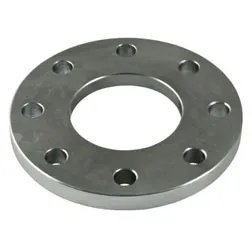-
Cangzhou Yulong Steel Co., Ltd.
-
Phone:
+86 13303177267 -
Email:
admin@ylsteelfittings.com
- English
- Arabic
- Italian
- Spanish
- Portuguese
- German
- kazakh
- Persian
- Greek
- French
- Russian
- Polish
- Thai
- Indonesian
- Vietnamese
- Zulu
- Korean
- Uzbek
- Hindi
- Serbian
- Malay
- Ukrainian
- Gujarati
- Haitian Creole
- hausa
- hawaiian
- Hebrew
- Miao
- Hungarian
- Icelandic
- igbo
- irish
- Japanese
- Javanese
- Kannada
- Khmer
- Rwandese
- Afrikaans
- Albanian
- Amharic
- Armenian
- Azerbaijani
- Basque
- Belarusian
- Bengali
- Bosnian
- Bulgarian
- Catalan
- Cebuano
- China
- China (Taiwan)
- Corsican
- Croatian
- Czech
- Danish
- Esperanto
- Estonian
- Finnish
- Frisian
- Galician
- Georgian
- Kurdish
- Kyrgyz
- Lao
- Latin
- Latvian
- Lithuanian
- Luxembourgish
- Macedonian
- Malgashi
- Malayalam
- Maltese
- Maori
- Marathi
- Mongolian
- Myanmar
- Nepali
- Norwegian
- Norwegian
- Occitan
- Pashto
- Dutch
- Punjabi
- Romanian
- Samoan
- Scottish Gaelic
- Sesotho
- Shona
- Sindhi
- Sinhala
- Slovak
- Slovenian
- Somali
- Sundanese
- Swahili
- Swedish
- Tagalog
- Tajik
- Tamil
- Tatar
- Telugu
- Turkish
- Turkmen
- Urdu
- Uighur
- Welsh
- Bantu
- Yiddish
- Yoruba

Nov . 01, 2024 07:04 Back to list
Understanding Class 900 Flanges and Their Applications in Industrial Settings
Understanding Class 900 Flanges An Overview
Flanges play a vital role in piping systems across various industries, ensuring secure connections between pipes, valves, and other equipment. Among the many types of flanges available, Class 900 flanges stand out due to their high-pressure capabilities and widespread usage in demanding applications.
Understanding Class 900 Flanges An Overview
These flanges are commonly manufactured in various materials, including carbon steel, stainless steel, and alloy steel, each offering unique properties for specific applications. For instance, stainless steel Class 900 flanges are favored in industries requiring corrosion resistance, such as chemical processing and oil and gas. In contrast, carbon steel options may be selected for their affordability and strength in less corrosive environments.
class 900 flange

The design of Class 900 flanges typically adheres to established standards outlined by organizations like the American National Standards Institute (ANSI) and the American Society of Mechanical Engineers (ASME). These standards include detailed specifications for dimensions, tolerances, and performance, ensuring that flanges can be reliably installed and maintained in various systems. The commonly used dimensions correspond to the ANSI B16.5 standard, which facilitates compatibility across different manufacturers and applications.
Installation of Class 900 flanges requires careful attention to detail to ensure leak-free, secure connections. Proper surface preparation, gasket selection, and bolt tightening are crucial steps in the installation process. Gaskets, such as spiral wound or full face gaskets, play a significant role in sealing the joint and preventing leaks, so selecting the appropriate gasket material that can withstand the specific chemical and thermal conditions is essential.
Additionally, maintenance and inspection of Class 900 flanges are imperative to ensure their longevity and operational safety. Regular checks for signs of wear, corrosion, or damage can help mitigate risks associated with high-pressure systems. Prompt replacement of any compromised components can prevent failures that may lead to costly downtime or hazardous incidents.
In conclusion, Class 900 flanges are a critical component in many industrial applications, providing reliable connections in high-pressure environments. Understanding their specifications, proper installation techniques, and routine maintenance is essential for engineers and operators alike to ensure safe and efficient operations.
Latest news
-
ANSI 150P SS304 SO FLANGE
NewsFeb.14,2025
-
ASTM A333GR6 STEEL PIPE
NewsJan.20,2025
-
ANSI B16.5 WELDING NECK FLANGE
NewsJan.15,2026
-
ANSI B16.5 SLIP-ON FLANGE
NewsApr.19,2024
-
SABS 1123 FLANGE
NewsJan.15,2025
-
DIN86044 PLATE FLANGE
NewsApr.19,2024
-
DIN2527 BLIND FLANGE
NewsApr.12,2024
-
JIS B2311 Butt-Welding Fittings LR/SR 45°/90° /180°Seamless/Weld
NewsApr.23,2024











